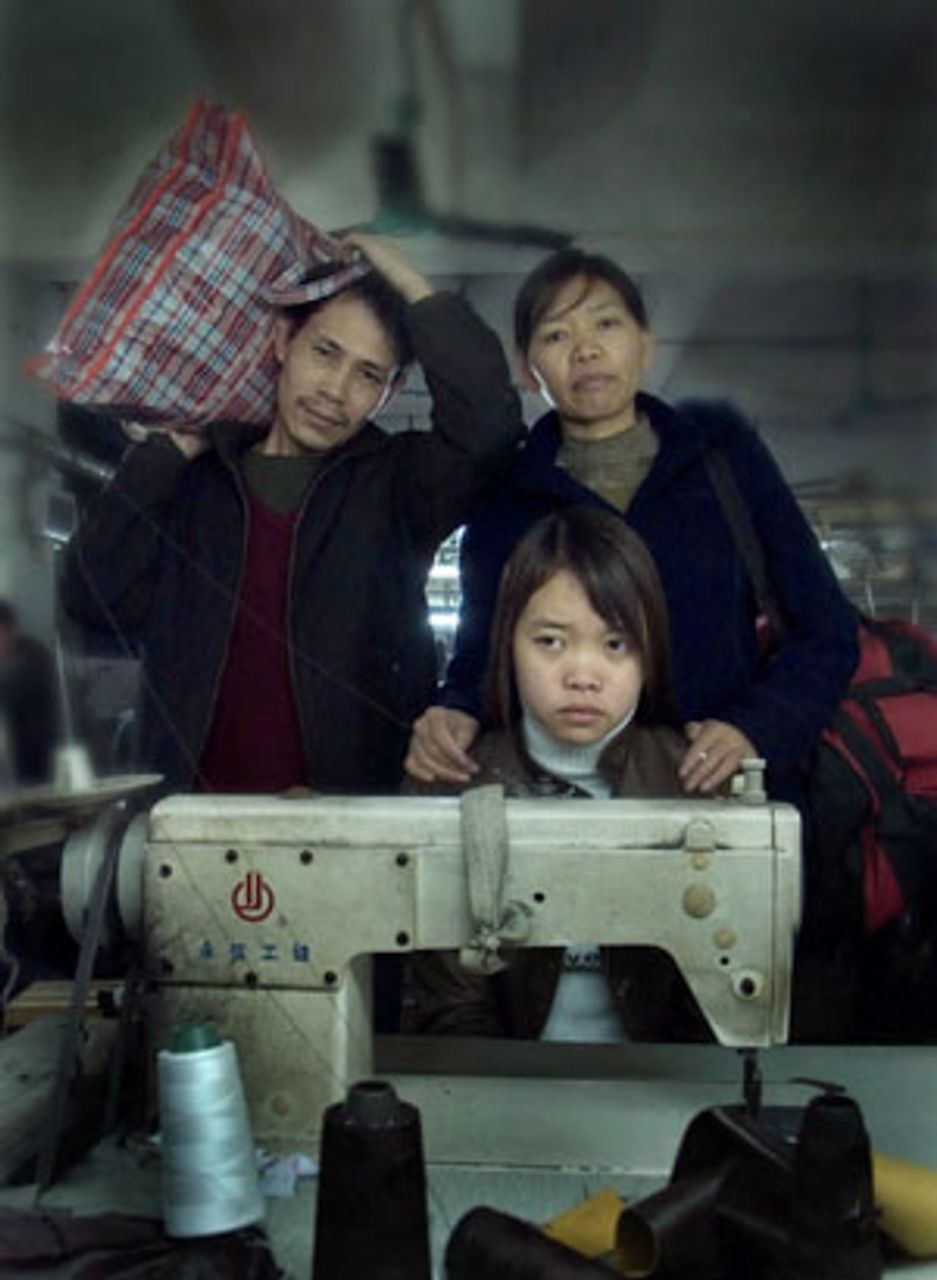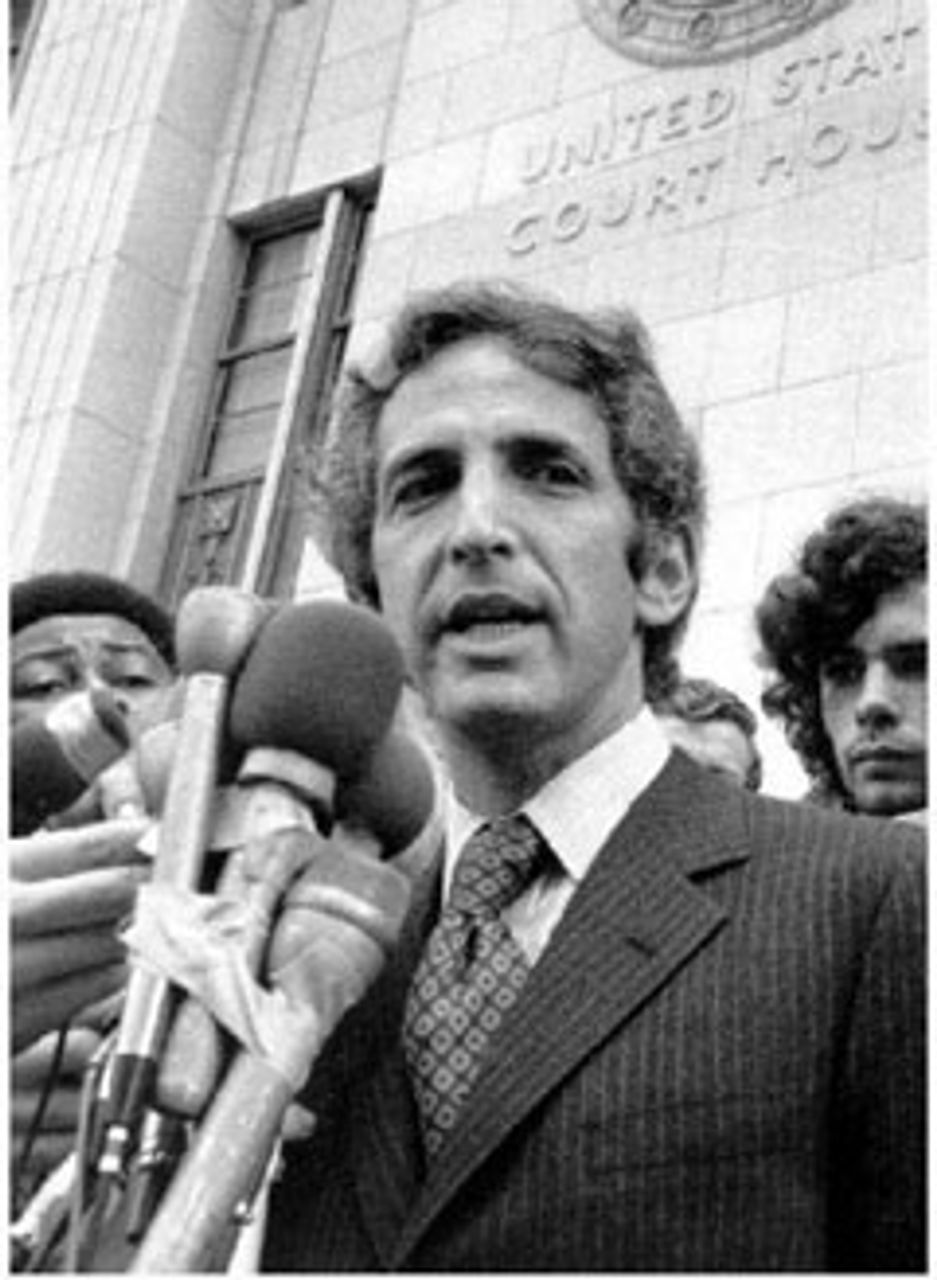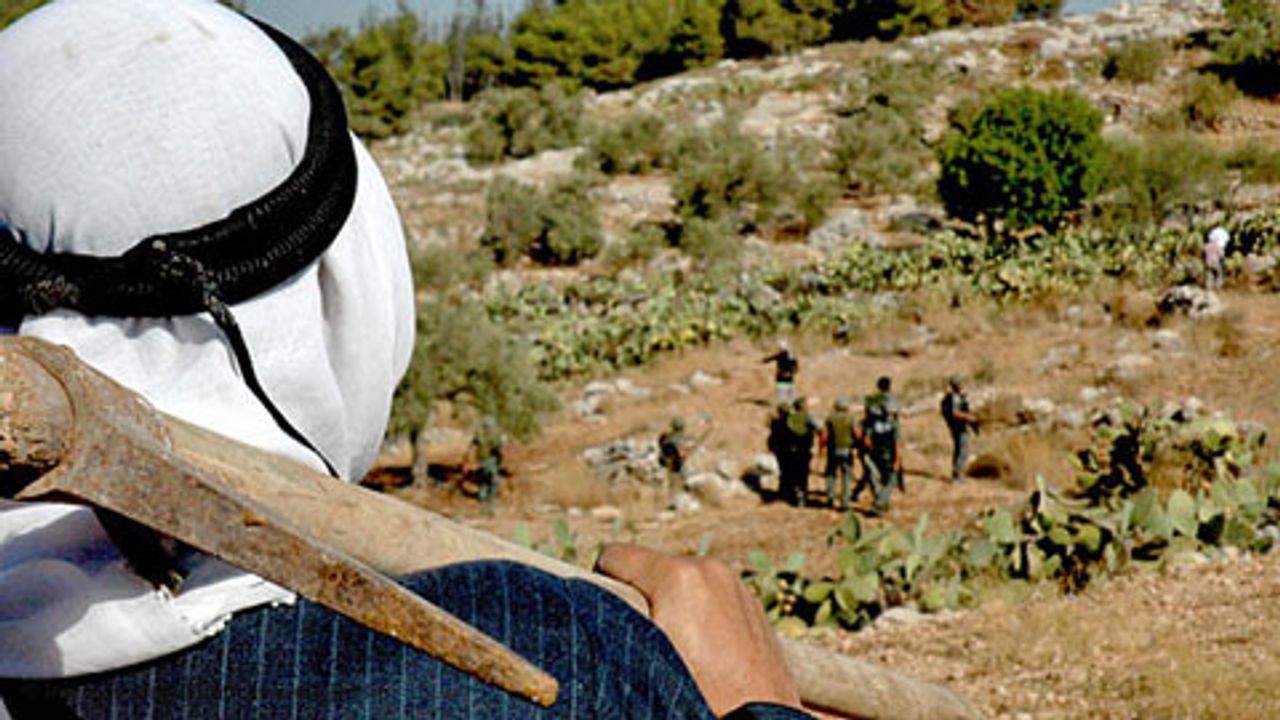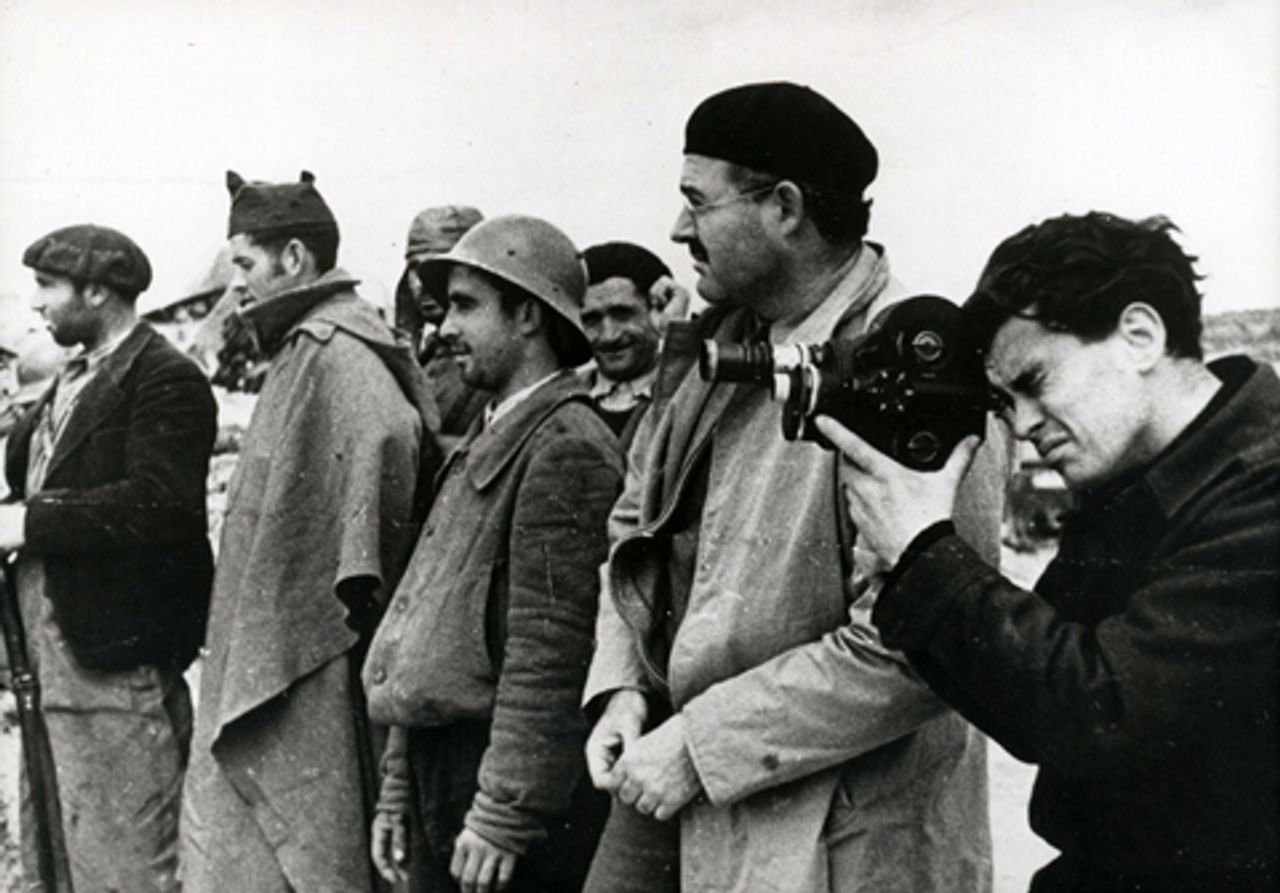This is the second in a series of articles on the 57th Sydney Film Festival. See Part 1.
This year’s Sydney Film Festival screened over 30 documentaries, a couple of which deserve much wider audiences than they are unfortunately likely to receive. There is no documentary festival in Australia and those that are purchased and broadcast on the free-to-air or cable networks are generally truncated versions of the originals. This is at odds with the growing demand for accurate, in-depth documentaries as people look for alternatives to the superficial and politically corrupted material produced by the official news media.
Last Train Home
The most powerful documentary at this year’s festival was Last Train Home, directed, photographed and edited by Lixin Fan, 29, a former journalist for China Central Television, the country’s state broadcaster. Shot between 2006 and early 2009, the 85-minute feature charts the life of Yang and Suqin Zhang, a middle-aged couple who had left their rural home and two children 16 years earlier to work as garment workers in Guangzhou city, 2,000 kilometres away. Fan’s intimate portrait records the quiet determination of the Zhangs and the difficulties of work and family life they confront.
 Last Train Home
Last Train HomeRegarded as outsiders by the Chinese Stalinist regime, rural migrants are treated like second-class citizens, denied access to decent wages and forced to live in overcrowded dormitories or shanty towns. Their movements are subject to a repressive permit system that forces them to have up to six permits to work in provinces outside their own. Police roundups of undocumented rural migrants are commonplace and those without official papers can be held in detention centres and deported back to their provinces.
Last Train Home refers to the journey made by millions of workers to their rural homes during the Chinese New Year, the world’s largest annual migration, involving more than 130 million people. The feature opens with the Zhangs queuing for rail tickets. These scenes are riveting and give some idea of what “a sea of humanity”, as the phrase goes, actually looks like.
Fan’s exploration of the struggle of one working class family is a microcosm of the rapidly expanding Chinese proletariat whose numbers have grown from about 120 million in 1980s to over 400 million today, the greatest single expansion of the industrial working class in human history.
Like millions of others, the Zhangs labour long and hard. They live in cramped substandard accommodation in order to send as much money back to their rural village where their children are being raised by their grandmother. The only time they see their children—Quin, a teenage girl, and Yang, a younger son—is for a few days during New Year celebrations. To the children their parents appear like distant relatives.
Rural life is harsh, poverty-stricken and for Quin, who is at high school, desperately dull with little prospect of a full-time job. Despite the urging of her parents to “study hard and not be like us,” she drops out of school and leaves the village to become an industrial worker. Increasingly concerned about their daughter’s fate, Yang and Suqin blame themselves. They worry about what can be done to ensure that their young son completes his education. Tensions grow and eventually erupt into a distressing fight between Quin and her father.
Next year, the scramble to get rail tickets is even more desperate as snowstorms cause train cancellations and authorities struggle to deal with the massive crowds. Some of the young workers undertaking the journey bluntly discuss their exploitation and compare wages with their counterparts in Europe and the US.
Last Train Home provides some indication of the impact of the global financial crisis on the Chinese economy. Garment factories are closed and there are scenes of a once busy port now deserted. The Zhangs wonder aloud how long their jobs will last. Conditions worsen and Suqin Zhang is eventually forced to return to the village, her husband still working in the small export garment plant.
Fan’s documentary is simple, with post-production kept to a minimum and virtually no commentary. Unlike the brief snippets of information about Chinese workers in the Western media, Last Train Home is deeply humane with real insights into the situation facing millions of Chinese workers, increasingly determined to change the situation they confront.
Daniel Ellsberg’s defiant exposure of Washington lies
The Academy-award nominated The Most Dangerous Man in America: Daniel Ellsberg and the Pentagon Papers, directed by Judith Ehrlich and Rick Goldsmith, and narrated by Ellsberg himself, is one of the few documentaries screening in Australian cinemas this year.
This valuable work brings together archival documents, including White House audio tapes of President Richard Nixon, and recent interviews, to produce a gripping account of Ellsberg’s evolution from a key military strategist and militant supporter of the Vietnam War to a courageous opponent of the imperialist intervention. Conversations between Nixon and Henry Kissinger discussing the use of nuclear weapons against North Vietnam are chilling, as is Nixon’s insistence that the US state apparatus “go after” Ellsberg.
 Daniel Ellsberg
Daniel EllsbergAs a key military insider, Ellsberg knew about the fraudulent character of the Gulf of Tonkin incident in August 1964, used by President Lyndon Johnson to escalate the war. Ellsberg himself was directly involved in helping produce false reports about so-called Vietcong war crimes.
The Ehrlich-Goldsmith feature systematically uncovers the lies used by the Kennedy, Johnson and Nixon administrations to justify and escalate the US intervention in Vietnam—deceptions which at a certain point Ellsberg could no longer stomach. Once Ellsberg had made up his mind, he was prepared to risk spending the rest of his life in prison if that would ensure the American people learnt about what was really going on in Vietnam and in the corridors of power in Washington.
The documentary traces out how leading US newspapers were prepared to challenge the Nixon administration and the military apparatus to publish the Pentagon Papers, leaked by Ellsberg, highlighting how much has changed in the past 40 years.
One weakness of the documentary, however, is its rather limited reportage of the popular international resistance to the Vietnam War. Without downplaying Ellsberg’s individual courage, the growing opposition of millions of ordinary people in the US and internationally to the bloody US intervention was no doubt a major factor in his decision to expose the US government and the military apparatus. This important relationship is not spelled out.
While Ellsberg remains an active opponent of current US interventions in Iraq and Afghanistan, The Most Dangerous Man in America, does not make any specific reference to the political methods used to justify these wars and the Vietnam intervention. The mountain of lies churned out by the Bush administration, with media backing, about “weapons of mass destruction” and the “war on terror”, along with similar claims from Obama, who has expanded military operations into Pakistan and is stepping up US sabre-rattling against Iran, are little different from the deceptions used to justify the Vietnam War.
While some critics have suggested that such references are unnecessary, these omissions suggest that Ehrlich and Goldsmith are nervous about drawing the political sword against the Obama administration. Judith Ehrlich spoke with the WSWS in Sydney during the festival and denounced the US invasions of Iraq and Afghanistan and the role played by the mass media in justifying these unprovoked attacks. She harboured the naive hope, however, that the Obama administration could be pressured into ending these military interventions (see: “A conversation with Judith Ehrlich”).
Opposition to Israel’s wall
Budrus by Brazilian-born filmmaker Julia Bacha (Control Room [2004] and Encounter Point [2006]) is about the resistance of a small Palestinian village to the dispossession of their land by the Israeli government. The 1,500 residents of Budrus are told by Israeli authorities that their land—300 acres and 3,000 olive trees—must be expropriated to make way for the construction of the barbed-wire outer perimeter of Israel’s massive concrete wall running through the Occupied Territories.
 Budrus
BudrusAyed Morrar, a lower-ranking Fatah official, decides to challenge the decision and mobilises a number of young men, his 15-year-old daughter, and then the entire village. The villagers defy the Israeli border police and the army, and eventually win the active support of a number of Israelis. Confronted by protesting Israeli citizens, the military is forced to back off and the government announces that it will change the fence route, saving most of the olive trees and a local elementary school.
Budrus is a frustrating work because it fails to probe any of the issues raised. Morrar opposes Hamas and also has political differences with the PLO leadership, whom he says, “Do not understand the common people.” These issues are not explored, however. Israel’s bloody assault on Gaza in 2008-2009 is not mentioned nor do the villagers comment on any issues beyond the immediate.
Bacha told Deutsche Welle earlier this year that she was not interested in telling the story on a “political level” but simply wanted to “show the experiences” of those involved in the protests.
“[R]egardless of how we arrived at this huge problem [of the Israeli-Palestinian conflict],” she said, “we can all help move this forward in a positive way that will respect the rights of both peoples.” This sort of wishful thinking is of little help to the Palestinian people or those Israelis looking for ways to fight the Zionist regime.
While the Budrus protests certainly demonstrated the possibility of unifying Palestinian and Israelis in a common struggle, the issues confronting the Palestinian masses and the Israeli working class cannot advance outside of a political understanding of how they “arrived at this huge problem”.
The underlying message and purpose of Bacha’s documentary is to bolster claims that pacifist protest actions can somehow put an end to the ongoing repression of the Palestinian people.
Joris Ivens and Indonesian independence
Indonesia Calling is the name of a short film made in 1945 by veteran Dutch filmmaker Joris Ivens about the Indonesian nationalist movement’s struggle against Dutch colonialism and the backing it received from Australia’s maritime unions.
This movie, and the politically-charged background to its production, is the subject of a new 90-minute documentary—Indonesia Calling: Joris Ivens in Australia. Directed by John Hughes, a Melbourne-based filmmaker, it is the last of a trilogy about early documentary film production in Australia. The other documentaries are Film-Work (1981) and The Archive Project (2006).
 Joris Ivens (holding camera) next to Ernest Hemingway in Spain
Joris Ivens (holding camera) next to Ernest Hemingway in SpainIvens (1898-1989) made his first film at the age of 13 and began attracting international attention after directing two short artistic documentaries—The Bridge and The Rain—in the late 1920s. Influenced by Soviet director Vsevolod Pudovkin, he was invited to visit the Soviet Union in 1929 where he directed a documentary about Magnitogorsk, a new industrial city. Ivens returned to the Soviet Union in 1931 and again for a couple of years in the mid-1930s to make other movies.
In 1937 the Dutch filmmaker directed The Spanish Earth, which was co-written with Ernest Hemingway, and the following year made a documentary about Chinese resistance to the Japanese occupation. Unable to return to Europe following the outbreak of World War II, he moved to the US and among other projects, directed one of Frank Capra’s Why We Fight films for the US War Department.
In 1944 Ivens was appointed film commissioner for the Netherlands East India (NIE) colonial government, which had been relocated to Australian following the Japanese occupation of Indonesia. He was commissioned to make several films for the NIE but resigned in protest in September 1945, after Holland stepped up its attempts to recolonise Indonesia, following the Japanese defeat.
At around the same time, Australian maritime workers began black-banning scores of Dutch merchant ships, in order to assist Indonesian nationalists who had just declared independence. The four-year industrial campaign blocked over 500 vessels—merchant and navy ships—from travelling to Indonesia. The blackban helped ensure that the Dutch were unable to regain control of Indonesia.
Immediately after tendering his resignation, and with the assistance of the Stalinist Communist Party of Australia, Ivens began shooting Indonesia Calling to document and support the union bans. Most of the events recorded in the short film were re-enactments staged by Ivens.
Hughes weaves together sections of Indonesia Calling, archival graphics, audio interviews and other historical material, including US and Australian intelligence reports on Ivens. Indonesia Calling no doubt played an important role winning support for the Indonesian nationalist movement in the Australian working class, but Hughes’s documentary passes over the fact that the Soviet bureaucracy and US imperialism were actively collaborating to prevent the Dutch from regaining their colonies in South East Asia.
Australia’s Chifley Labor government privately backed these manoeuvres, recognising that an “independent” Indonesia provided opportunities for Australian imperialism in the region. Canberra took no action to stop the union bans and ignored Dutch government demands that Ivens—whom Amsterdam regarded as a traitor—and others involved in making Indonesia Calling be prosecuted.
Hughes’s documentary is also rather coy about Ivens’s political history. It fails to note that the Dutch filmmaker was an unwavering supporter of the Soviet Stalinist bureaucracy, backing all its political twists during the 1930s, 40s and 50s. This included his endorsement of the bloody repression of revolutionary elements in Spain by Stalinist agents during the 1930s and the infamous Moscow Trials, which alleged that Leon Trotsky and others in the leadership of the Bolshevik Party had become fascist agents.
According to Hans Schoots’s Living Dangerously: A biography of Joris Ivens, the Moscow Trials “hardly touched” Ivens psychologically, who believed that the frame-up charges against Leon Trotsky and other old Bolsheviks were “irrefutable”. Hughes is obviously aware of this, but chooses to remain silent.
To be continued
